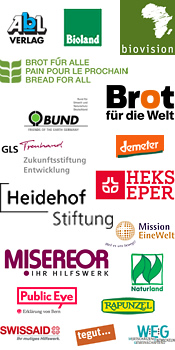Nachricht
08.10.2018 | permalink
Scientists urge rapid and radical changes to limit global warming

Limiting global warming to 1.5°C will require rapid and far-reaching changes in all aspects of society, including agriculture and food systems. This is one of the key messages of the Special Report on Global Warming of 1.5°C, adopted by the Intergovernmental Panel on Climate Change (IPCC) in Incheon, South Korea on October 5th. The report was prepared by 91 authors and review editors from 40 countries and cites more than 6,000 scientific references. It warns that we are already seeing the consequences of 1°C of global warming through more extreme weather, rising sea levels and diminishing Arctic sea ice, among other changes. The climate scientists predict that global warming is likely to reach 1.5°C between 2030 and 2052 if it continues to increase at the current rate. The researchers warn that every fraction of additional warming would worsen the impact of climate change. “Every extra bit of warming matters, especially since warming of 1.5°C or higher increases the risk associated with long-lasting or irreversible changes, such as the loss of some ecosystems,” said Hans-Otto Pörtner, Co-Chair of IPCC Working Group II.
The report highlights a number of climate change impacts that could be avoided by limiting global warming to 1.5°C compared to 2°C. For example by 2100, global mean sea level rise is projected to be around 10 cm lower with global warming of 1.5°C. In addition, there is also high confidence that the probability of a sea-ice-free Arctic Ocean during summer is substantially lower with a 1.5°C rise. If global warming reaches 2°C, virtually all coral reefs would be lost whereas declines could be limited to 70-90% at 1.5°C. Limiting global warming is also projected to lower the impacts on terrestrial, freshwater, and coastal ecosystems and to retain more of their services to humans. “Climate-related risks to health, livelihoods, food security, water supply, human security, and economic growth are projected to increase with global warming of 1.5°C and increase further with 2°C,” the report states. The groups most affected will include disadvantaged and vulnerable populations, some indigenous peoples, and local communities dependent on agricultural or coastal livelihoods. The regions which will suffer most are Arctic ecosystems, dryland regions, small-island developing states, and least developed countries. Poverty and disadvantages are expected to increase with rising temperatures. “Limiting global warming to 1.5°C could reduce the number of people both exposed to climate-related risks and susceptible to poverty by up to several hundred million by 2050,” the report finds.
The report also examines pathways available to limit warming to 1.5°C and highlights that this would require “rapid and far-reaching” transitions in land, energy, industry, buildings, transport, and cities. Global net human-caused emissions of carbon dioxide (CO2) would need to fall by about 45% from 2010 levels by 2030, reaching ‘net zero’ around 2050. Mitigation and adaptation options for achieving land transitions are grouped around agriculture and food, ecosystems and forests, and coastal systems. Adaptation options in food and agriculture include improved livestock management, increasing irrigation efficiency, agroforestry and management of food loss and waste. The authors stress that livestock are responsible for more greenhouse gas emissions than all other food sources. Emissions are caused by feed production, enteric fermentation, animal waste, land-use change and livestock transport and processing. “There is increasing agreement that overall emissions from food systems could be reduced by targeting the demand for meat and other livestock products, particularly where consumption is higher than suggested by human health guidelines,” the report says. “Adjusting diets to meet nutritional targets could bring large co-benefits, through greenhouse gas mitigation and improvements in the overall efficiency of food systems. Dietary shifts could contribute one-fifth of the mitigation needed to hold warming below 2°C.”
Another option mentioned in the report is agroforestry: “The integration of trees and shrubs into crop and livestock systems, when properly managed, can potentially restrict soil erosion, facilitate water infiltration, improve soil physical properties and buffer against extreme events.” According to the authors, there is high agreement on the feasibility of agroforestry practices that enhance productivity, livelihoods and carbon storage, including from indigenous production systems, with variation by region, agroforestry type, and climatic conditions. Decreasing food wastage also has high mitigation and adaptation potential and could play an important role in land transitions towards 1.5°C, provided that reduced food waste results in lower production-side emissions rather than increased consumption. Around one-third of the food produced on the planet is currently not consumed, affecting food security and livelihoods. “This report gives policymakers and practitioners the information they need to make decisions that tackle climate change while considering local context and people's needs,” said Debra Roberts, Co-Chair of IPCC Working Group II. (ab)

